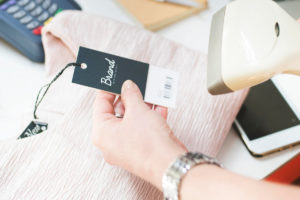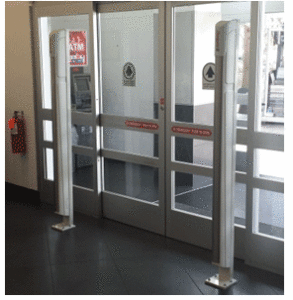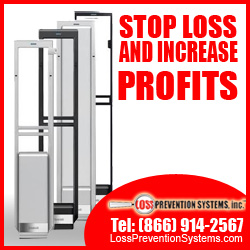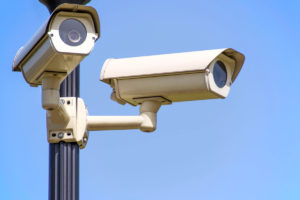 Wow, Christmas is over and Retailers are starting to dig out from the carnage. Unfortunately, some of the carnage is all the merchandise that shoplifters have liberated from your store. I believe that theft is actually the oldest vice around. Even older than “the oldest profession”. As long are there are two things on this earth 1-people and 2-stuff, there will be theft. Well, neither is going away anytime soon. So what do we do?
Wow, Christmas is over and Retailers are starting to dig out from the carnage. Unfortunately, some of the carnage is all the merchandise that shoplifters have liberated from your store. I believe that theft is actually the oldest vice around. Even older than “the oldest profession”. As long are there are two things on this earth 1-people and 2-stuff, there will be theft. Well, neither is going away anytime soon. So what do we do?
The first thing is to make the decision to take your store back from the enemy. Putting the solution off will not fix the problem and it will get worse. The second is to implement the two proven solutions. Training and a Sensormatic system.
TRAINING – Over the past 35 years I have heard countless retailers say the same thing. “I don’t know what I can or cannot do with or about shoplifters”. Shoplifters are no different than any other business challenge we face. Attack it head-on. Loss Prevention Systems can educate you on what you can and cannot do. But more importantly, we will take you off the defensive and put you on the offense. Now I know what you may be thinking right now. “I am not going to chase shoplifters down and tackle them!”. Well, I am glad we got that out because we do not want you to do that either. We want to prevent the loss from occurring (that’s why we call ourselves Loss Prevention Systems, Inc. What a coincidence, huh?).
Training should cover a discussion of the problem itself, the law both criminal and civil, who shoplifters are and how to spot them before they even steal, going on the offensive with customer service tactics and more. We do this live via webinar with as many of your folks as you can pull together. I have actually found that most of the time we need to do two sessions so we do not leave the store short staffed or someone misses out. Training will help give you the confidence to attack the shoplifting scourge head-on.
SENSORMATIC SYSTEM – “So if I am trained, why do I need a Sensormatic system and Sensormatic security labels?” Great question, glad you asked that! (sorry, I am in one of those moods) Consider this, training is only half of the solution. You and your staff can be trained up in the techniques to prevent and deal with shoplifting but you cannot be everywhere at once, even in a small boutique. Shoplifters WILL create an environment where they can steal. On top of that what you will find is that some of your “best” customers are also actually stealing from you. Yes, that good customer is buying merchandise, either small inexpensive items or even more expensive ones but they are actually stealing other merchandise in addition to that. And because they are a “best” or frequently seen customer less attention is paid to their activities. They are kind of a fixture, they hang out a bit, joke with the staff, ask questions and then…. They are simply not observed because “that’s just Sam or Wendy, they are really nice”.
So to handle all that you will find that a Sensormatic system is actually cheaper than additional payroll. In addition to that, the Sensormatic system never takes a day off, does not call in sick or no show. The Sensormatic system is working 24/7. Actually, many of our systems actually power themselves down after you close to save on your energy bill. They automatically wake themselves up when you come in the next day.
A Sensormatic system has two benefits. It sends a message to the thieves (real customers do not care) and prevents losses. And, of course, the tags and labels are actually protecting your merchandise and bottom line.
So there are no more excuses. Make this year the best yet for sales you make and actually keep the margin make on the bottom line. Grinch, GO AWAY! Contact us today. We can make both Training and a Sensormatic system your reality.
 For a loss prevention officer, the holiday season is a hard time to be jolly when the busiest shopping season of the year brings with it its shoplifters, crime, and theft.
For a loss prevention officer, the holiday season is a hard time to be jolly when the busiest shopping season of the year brings with it its shoplifters, crime, and theft. As of September 2018, the national unemployment rate is down to 3.7% according to ncls.org. As a retail store owner thinks about what this means for you in terms of trying to hire to fill job openings including seasonal hiring for the holidays. With an employment rate of 96.3% that leaves a sparse workforce as a hiring pool. I have read articles by those who think that with a dwindling number of people seeking work employers are going to have to forego pre-employment background checks. They seem to believe that the need to hire outweighs any baggage the job candidates bring with them.
As of September 2018, the national unemployment rate is down to 3.7% according to ncls.org. As a retail store owner thinks about what this means for you in terms of trying to hire to fill job openings including seasonal hiring for the holidays. With an employment rate of 96.3% that leaves a sparse workforce as a hiring pool. I have read articles by those who think that with a dwindling number of people seeking work employers are going to have to forego pre-employment background checks. They seem to believe that the need to hire outweighs any baggage the job candidates bring with them.  One of the most prevalent crimes in the United States is shoplifting.
One of the most prevalent crimes in the United States is shoplifting. NO! not yet. Before we begin patting ourselves on the back you must remember that your Sensormatic System is only part of your shoplifting solution. Your Sensormatic System will protect your merchandise however, many shoplifters are determined and will try to steal anyway. The Sensormatic System itself is a deterrent. Its mere presence will dissuade many shoplifters.
NO! not yet. Before we begin patting ourselves on the back you must remember that your Sensormatic System is only part of your shoplifting solution. Your Sensormatic System will protect your merchandise however, many shoplifters are determined and will try to steal anyway. The Sensormatic System itself is a deterrent. Its mere presence will dissuade many shoplifters.
 Now that fall is upon us it is getting darker earlier. These hours of darkness can bring unique challenges for retail owners. Have you ever considered that it is your responsibility to help keep customers and employees remain safe while they are on your property? It may make sense that you are responsible for employee safety but you are also obliged to help keep customers safe as well. This includes your parking lot and the exterior areas around the building. How do you do this? What do you have to protect against? Good questions and hopefully we can provide you with answers to those questions and suggestions to make your business safer.
Now that fall is upon us it is getting darker earlier. These hours of darkness can bring unique challenges for retail owners. Have you ever considered that it is your responsibility to help keep customers and employees remain safe while they are on your property? It may make sense that you are responsible for employee safety but you are also obliged to help keep customers safe as well. This includes your parking lot and the exterior areas around the building. How do you do this? What do you have to protect against? Good questions and hopefully we can provide you with answers to those questions and suggestions to make your business safer. For a small business owner, bringing sales to their business is not an easy feat.
For a small business owner, bringing sales to their business is not an easy feat. The retail industry loses an approximate $45 billion a year due to shoplifting, organized retail crime, merchant, and clerical errors. For the small retail owner, any loss due to shoplifting puts a financial strain on their ability to do business, hire more personnel or invest and grow their business.
The retail industry loses an approximate $45 billion a year due to shoplifting, organized retail crime, merchant, and clerical errors. For the small retail owner, any loss due to shoplifting puts a financial strain on their ability to do business, hire more personnel or invest and grow their business. You think that you may be scoring a great deal on cheap, knock-off Electronic Article Surveillance (EAS) hard tags and labels, however, over time you find that you are missing shoplifters due to poor pick rates or hard tags that are easy to defeat. Why? To make real, quality EAS hard tags and labels it takes more effort and time. The materials and sophistication of the circuit is not something that can be easily done by a slave laborer in some dark factory in a third world nation. The labels we sell are all high-quality EAS labels and tags that are both Sensormatic and Checkpoint Systems compatible.
You think that you may be scoring a great deal on cheap, knock-off Electronic Article Surveillance (EAS) hard tags and labels, however, over time you find that you are missing shoplifters due to poor pick rates or hard tags that are easy to defeat. Why? To make real, quality EAS hard tags and labels it takes more effort and time. The materials and sophistication of the circuit is not something that can be easily done by a slave laborer in some dark factory in a third world nation. The labels we sell are all high-quality EAS labels and tags that are both Sensormatic and Checkpoint Systems compatible. In every career, there are people, places, and things that help to shape who you become in that career. A Retail Loss Prevention career is no different. My career in Loss Prevention goes back nearly 27 years. A long time ago in a department store not far away I was hired as a Loss Prevention Associate with only my military experience and a college degree in hand. I had absolutely no Loss Prevention background. There have been lessons learned along the way that shaped the way I approached Loss Prevention and the way I developed my style of working with people and managing others.
In every career, there are people, places, and things that help to shape who you become in that career. A Retail Loss Prevention career is no different. My career in Loss Prevention goes back nearly 27 years. A long time ago in a department store not far away I was hired as a Loss Prevention Associate with only my military experience and a college degree in hand. I had absolutely no Loss Prevention background. There have been lessons learned along the way that shaped the way I approached Loss Prevention and the way I developed my style of working with people and managing others.